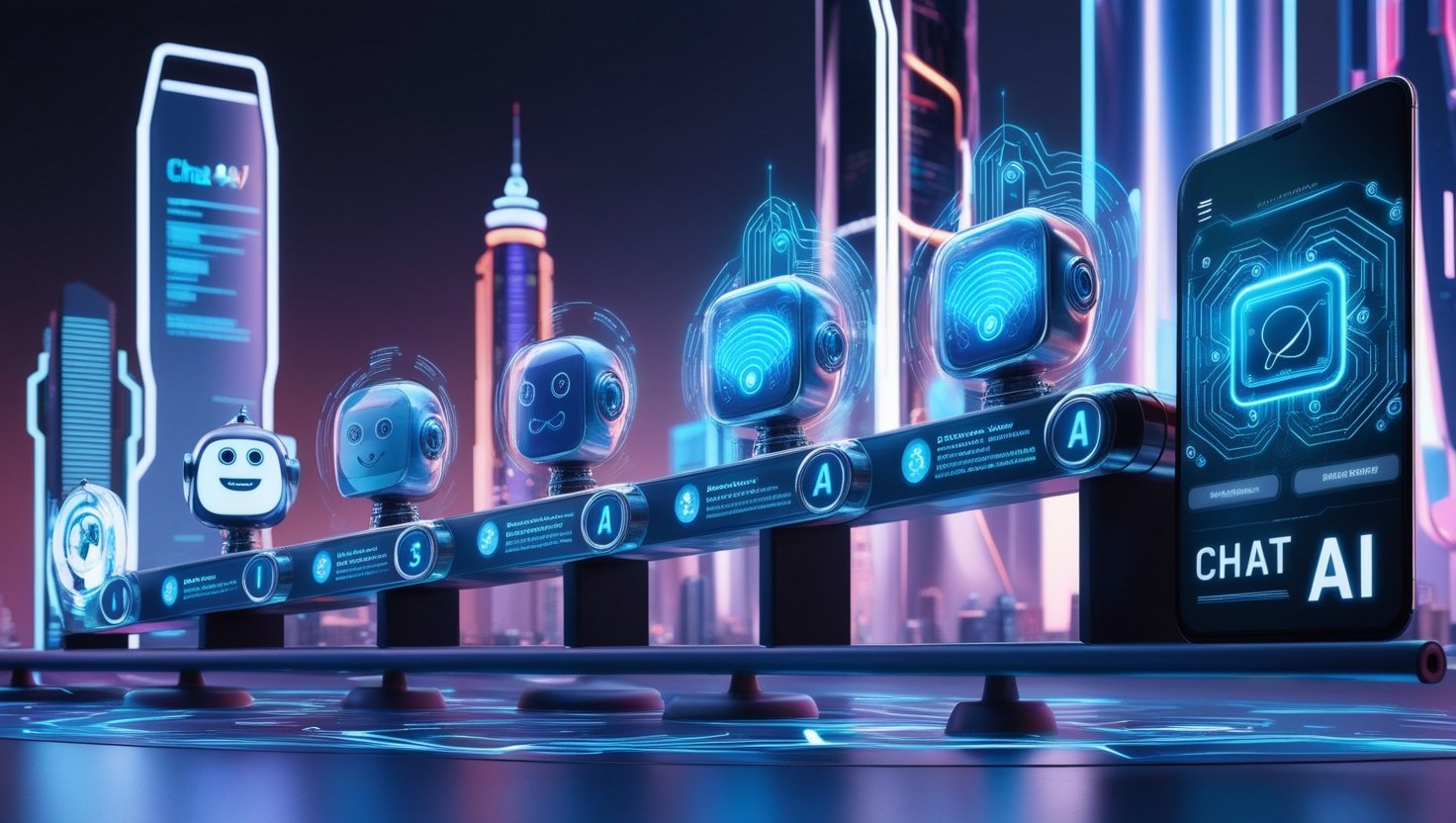The field of Artificial Intelligence has taken over a lot of dimensions in the recent past. Among them, the application of Chat AI is really fascinating and is one of the vital tools that is bridging human-computer interaction through customer support, personal assistants, and other applications. This article tries to find out how this has been developed, works, applications, and what the future holds for this kind of technology.
Understanding Chat AI
Chat AI is the artificial intelligence systems designed to converse with humans in a way that seems human-like. The central power behind all these systems is NLP, or the sub-area of AI that allows a machine to understand, interpret, and generate human language. Some other notable examples include, but are not limited to, chatbots, and virtual assistants like Siri, Alexa, and conversational agents within websites and apps.
Chat AI basically mimics the voice of a human in talking. This is feasible only by using complex algorithms and neural networks trained upon big text datasets with some kinds of machine learning models. Today’s advanced Chat AI systems work both with supervised and unsupervised learning in order to further enhance performance and adaptability according to user needs.
The Development of Chat AI
Chat AI was a long way off when started. The journey starts from very basic rule-based chatbots with pre-programmed responses that just worked but were really unyielding and lacked the ability to handle complex conversations.
Machine learning was a significant advancement, with chatbots becoming smarter with algorithms used to analyze data and learn from interactions. Deep learning and transformer models, like OpenAI’s GPT series, became the turning points. The models are able to process and generate human-like text with amazing accuracy, thereby allowing more natural and engaging conversations.
How Chat AI Works
Natural Language Understanding: In this step, interpretation of the user’s input happens. NLU allows a system to interpret the meaning, intent, and contextual sense of the text, including keywords, sentiment, and parsing grammatical structure.
Dialogue Management: Then, after understanding the response, it is determined in this step. Context and pre-trained models history are taken into account as dialog management focuses on decision making based on predefined rules.
NLG: In this case, the system produces a coherent and contextually relevant response. NLG ensures that the output mimics human language, and the conversation will sound more natural.
Feedback Loop: Modern Chat AI systems update their models with the help of feedback gained from user interactions. As a result, it increases accuracy and personalization with time.
Applications of Chat AI
The versatility of Chat AI has been used in a variety of applications. Some of the main applications are:
1. Customer Service
The use of Chat AI is mainly seen in customer service where businesses install chatbots that help the customers with common queries to which one can refer if something went wrong with some products or services. Therefore, this increases efficiency while at the same time also improving customer satisfaction through its 24/7 customer support service.
2. Healthcare
Chat AI changes the patient care landscape as virtual health assistants can arrange appointments, remind patients about their medication, and can even provide preliminary diagnoses for symptoms. All these tools lighten the load of healthcare providers and open up avenues for more people.
3. E-Commerce
E-commerce sites have adopted Chat AI to give a better shopping experience to their customers. From customized product suggestions to immediate customer support, AI-based chatbots streamline the buyer’s journey and increase sales.
4. Education
Educational platforms use Chat AI to provide students with customized learning experiences. Virtual tutors may demonstrate complex issues, reply to challenging questions by the students and provide practice assignments. In this way, it creates a more participative and engaging experience
5. Entertainment
With virtual characters and interactive storytelling within the entertainment industry, it makes sense to use Chat AI.
Gaming companies deploy their conversational agents on using AI-driven to help experience a game for gamers
6. Human Resources
HR departments recruit and engage employees through use of Chat AI. These AI technologies can screen a resume, prepare an interview, and offer onboarding support. This saves so much time and resources.
Benefits of Chat AI
The integration of Chat AI has numerous benefits:
- Effectiveness: Chat AI can take part in several conversations at once, thus enhancing productivity through reduced response times.
- Scaling: Companies are able to scale the operation without a significant increase in costs using AI technology-based chatbots.
- Personalization: The advanced AI systems check user preference and behavior so that interactions are shown personal.
- Accessibility: Chat AI gives prompt assistance so the services offered are accessible for users of different needs.
- Cost-Effectiveness: The operations cost and the human resources would be appropriately utilized for performing complex operations since automation of simple operations is allowed.
Challenges and Limitation
There are also some challenges that this technology of Chat AI has to face.
The understanding of context for high-level models is excellent while processing language but has a problem with the understanding of subtle and ambiguous queries.
Some ethical issues connected with AI relate to the data privacy problem, biased algorithms, and the potential misuse of conversational agents.
Dependence on Data: The performance of Chat AI largely depends upon the quality and diversity of the training data. If there is either not enough or biased data, then the outcomes may not be optimal.
Human-like interaction is another problem since AI is yet to develop human-like emotional intelligence and cannot perceive body language.
Future of Chat AI
The future of Chat AI seems pretty bright, with continuous innovations that would help overcome the current issues. Some of the trends defining its evolution are listed below:
1. Multimodal AI
This will enable text and speech, along with input through vision, and sessions will gradually become more interactive. Multimodal AI systems will ensure that people can communicate with computers in a combination of voices, texts, and other forms of gesture.
2. Emotional Intelligence
It will have emotional intelligence incorporated into Chat AI. It will enable the AI systems to sense and react to it accordingly in terms of emotions, which in turn will make human like interactions
3. Hyper-personalization
The next upgrade would be in the aspect of machine learning to enable the most hyper-personalized experience for the chat AI such that it would almost be able to foresee and anticipate the user’s need and preference much better.
4. Industry-specific solutions
The applications of it in the future will be industry-specific to provide solutions for health care, finance, education, etc.
5. Responsible AI Development
Ethics are going to be a pressing issue. The developers will work to build AI which is transparent, fair and accountable yet respects the privacy of its users and reduces bias as much as possible.
Conclusion
This is a technology breakthrough in chat AI that changes the way human beings interact with machines.. Applications cut across all industries: efficiency, accessibility, and personalization are some of the key advantages. Yet, challenges still exist; however, innovation is very fast, so the future will definitely see Chat AI becoming even more integral to our daily lives.



